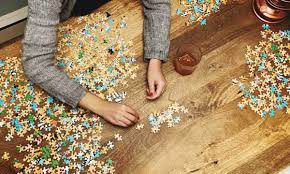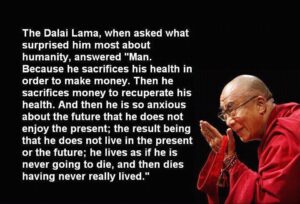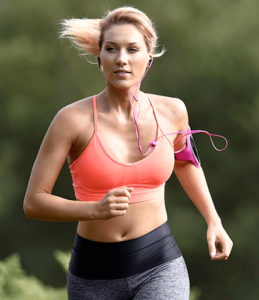This is an interesting article that I notice often in my studio during … [Read More] about How to Make The Time Go Faster During A Workout
it’s not just working out. It's building a foundation for a better life.
OMT: Osteopathic Manual Therapy
Hey there, friend! If you’re fed up with endless manual therapy appointments that never quite fix the problem—or if you’re sick of insurance limitations and generic exercise handouts—you’ve landed in the right spot. Osteopathic Manual Therapy (OMT) takes a whole-body approach, using hundreds of specialized techniques to address your unique needs. And because we don’t deal with insurance, we can focus on what you actually need, not what your policy allows.
This page is here to give you a better idea of how to put it all together. We’ll lay out a detailed overview that will give you a better idea of how to look at what you need and what questions to start asking. You can then take this information and use the links on the page to reach out for help or dig deeper into understanding more about the best, most sustainable way to work with your body.
In this article you can go down the rabbit hole of the best way to use OMT: Osteopathic Manual Therapy. Start at the beginning and read it through, or use one of the titles below to jump to a section.
Enjoy!
Table Of Contents
How is this different than Physical therapy, Chiropractic and Massage Therapy?
What is Osteopathy?
Osteopathy is all about looking at your body as one connected, living system—this includes everything from muscles, joints, and internal organs to personality and values. It’s different from Osteopathic Medicine (practiced by DOs in the U.S.), which follows a more traditional medical path. Osteopathy, by contrast, is hands-on and holistic. We focus on getting your body to function at its best so it can heal itself.
Key Principle:
- Structure dictates function, and function dictates structure.
In plain English: If your posture is off, your movement and health suffer. If your movement suffers, your posture usually gets worse. This means you life gets worse.
Osteopathy was founded by Andrew Taylor Still way back in 1874, and has evolved thanks to brilliant minds like Littlejohn, Stoddard, Barral, and Guy Voyer. Our founder, Ekemba Sooh, spent 15 years learning directly from Guy Voyer—so rest assured, you’re in good hands!

Why pair OMT with a holistic exercise and fitness program?
Think of osteopathy like the trunk of a tree, with all the techniques and exercises as its branches. They’re designed to work together in one unified system. This is way more effective than piecing together bits of different “puzzles” from random practitioners. By following one philosophy and approach, everything fits together seamlessly—so you see results faster and more completely.

What the heck is Osteopathic Manual Therapy?
OMT is a hands-on treatment that aims to “normalize” your body’s soft tissues—muscles, fascia, ligaments, and more. “Normalizing” simply means getting them back to the state they’re supposed to be in.
Heads-Up
This is not the same as Osteopathic Manipulative Treatment that DOs perform, which involves cracking or adjusting joints. We don’t do that.
Why Focus on Soft Tissues?
Your soft tissues decide how you hold yourself—i.e., your posture. When posture goes downhill, function follows. By carefully working on the fascia and other tissues, we:
- Restore fluid flow (blood, lymph, etc.) to speed healing.
- Activate the underworked areas.
- Relax the overworked areas.
We pair this with targeted exercises so your body relearns how to stay in its new, healthier alignment. Without that follow-up, you’ll eventually slip back into old patterns.
How is this different than Physical therapy, Chiropractic and Massage Therapy?
Physical Therapy
- Typical PT Goal: Regain basic functions (think walking, brushing teeth) in line with insurance protocols.
- OMT Goal: Go beyond basics to achieve a fully functioning body so you can live life your way.
- Insurance Limitations: PTs often must stick to what insurance covers, which can mean skipping treatments that would help but aren’t “approved.”
- Education & Protocols: PT programs tend to teach standardized, classical biomechanics. Helpful, but not always holistic.
Chiropractic
- Chiro Focus: Adjusting the spine to correct misalignments.
- OMT Focus: Balancing soft tissues so bones naturally realign themselves.
- Why Soft Tissue Matters: Fascia and muscles ultimately decide where your bones sit. If these tissues stay tight or weak, your spine can drift right back out of alignment.
Massage Therapy
- Massage Goal: Relax or stimulate soft tissues—often for stress relief or to loosen up knots.
- OMT Goal: Zero in on the specific tissues causing problems and address them in a precise, clinical way.
- Injury Considerations: Some injuries need pinpoint techniques. A general massage might feel good but could actually worsen certain issues if it presses on the wrong spot.
Bottom Line:
- Each method (PT, chiropractic, massage) has its strengths.
- OMT stands out by focusing on how all soft tissues interact and pairing that hands-on work with specific exercises to keep you aligned and reduce your need for ongoing treatments.

Do you do adjustments?
Nope!
We don’t “pop” or crack your joints. Instead, we calm down or activate the right soft tissues so your bones can slip back into place on their own. Your body is pretty smart—if you give it the right environment, it knows how to heal itself.
Do You Take Insurance?
Nope again.
In New Mexico, our services fall under the Health Freedom Act. We’re fully certified to do what we do, but because we aren’t physicians and don’t claim to be, we can’t bill insurance. That said, it means no red tape telling us how to treat you.
What are your Osteopathic Manual Therapy sessions like?
- Session Length: 45 minutes each.
- First-Time Clients: You’ll book two sessions up front. During these, we’ll do an in-depth assessment—posture check, SI joint mobility, health history, and maybe some cardio or strength tests. Then we jump into hands-on treatment and exercises.
- Homework: You’ll leave with personalized stretches and exercises (no cookie-cutter handouts!). We also provide short videos you can review for 30 days. If you continue with private sessions, these stay in your member portal.
- Scheduling: Ideally, these first two sessions happen back-to-back (90 minutes total), but if not, we’ll schedule them close together.
- Cancellation Policy: We need 24 hours’ notice. If you cancel late, we have to charge you—sorry!
How Often Should I come In For My OMT?
As little as possible!
Our whole goal is to get you better and keep you that way, not keep you coming back forever. Expect to visit more frequently at first—maybe once a week or more if you’ve had a long-term issue. Once you’re where you want to be, a monthly check-in can help you stay on track.
Where Do You Go from Here?
If you’re ready to ditch those never-ending appointments that don’t actually fix anything and want a stronger, more balanced body, we’re here for you. At SolCore Fitness & Therapy, we do it all under one roof:
- Precise soft tissue work to normalize posture and balance.
- Holistic exercise programming so you can keep those gains and prevent future setbacks.
This one-two punch lets you tackle the root causes of pain, prevent them from coming back, and stay active in the things you love.
Ready to Dive In?
Use the links on this page to learn more about how OMT + a Holistic Exercise and Fitness program can work for you, or reach out to schedule your first session. Here’s to a happier, healthier, and more mobile you!
Your Next Steps. Use A Holistic Exercise And Fitness Routine With Expert Coaching In Our Services
- Private Sessions: Get one-on-one support to pinpoint and fix those weak links.
- Group Classes: Train in a supportive environment that still respects individual needs.
- Online Programs: Perfect if you’re juggling a busy schedule or live outside our area.
We’d love to help you write the next chapter of your fitness journey—one that’s free of pain, packed with energy, and brimming with confidence.
Ready to get started?
Contact us or explore our programs to learn more.
Because, hey, your body is worth it.
Footer

You are the most valuable thing you have
You've heard it before, "Your house is the most valuable thing you have." While … [Read More] about You are the most valuable thing you have

Katy G – When All Else Failed, She Tried Again And Succeeded
The big smile that Katy comes in with is always a joy to see. But situations with her body were … [Read More] about Katy G – When All Else Failed, She Tried Again And Succeeded
